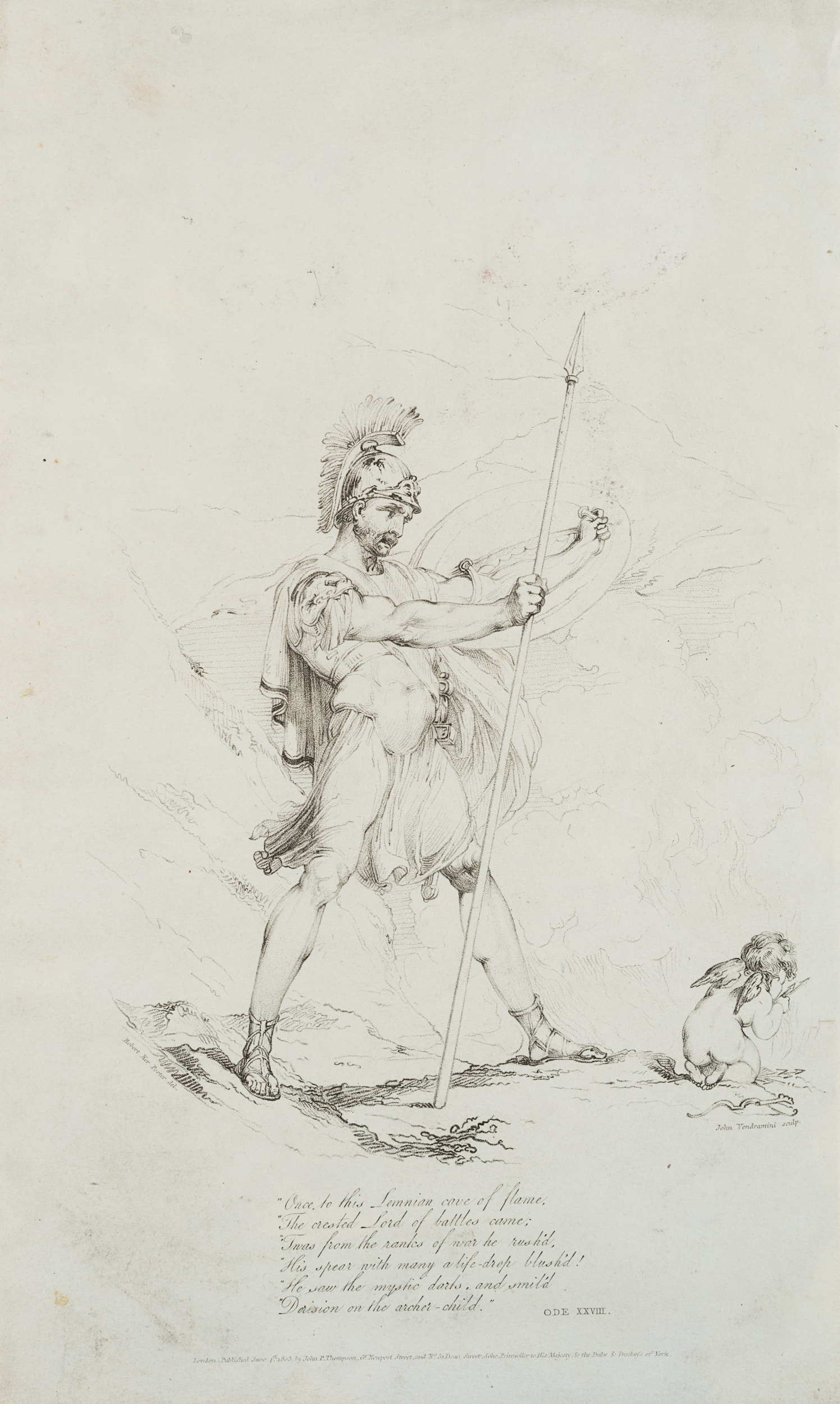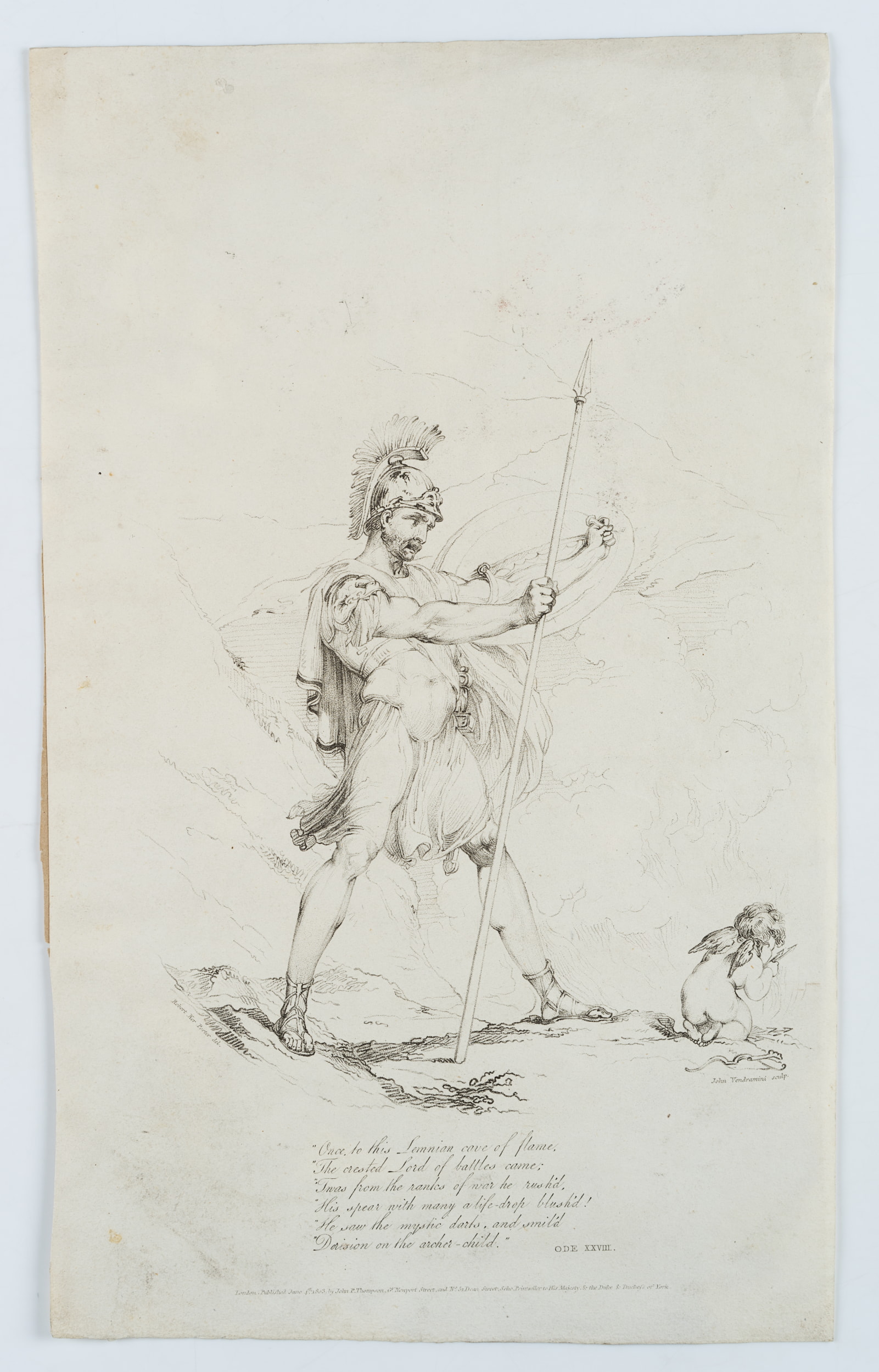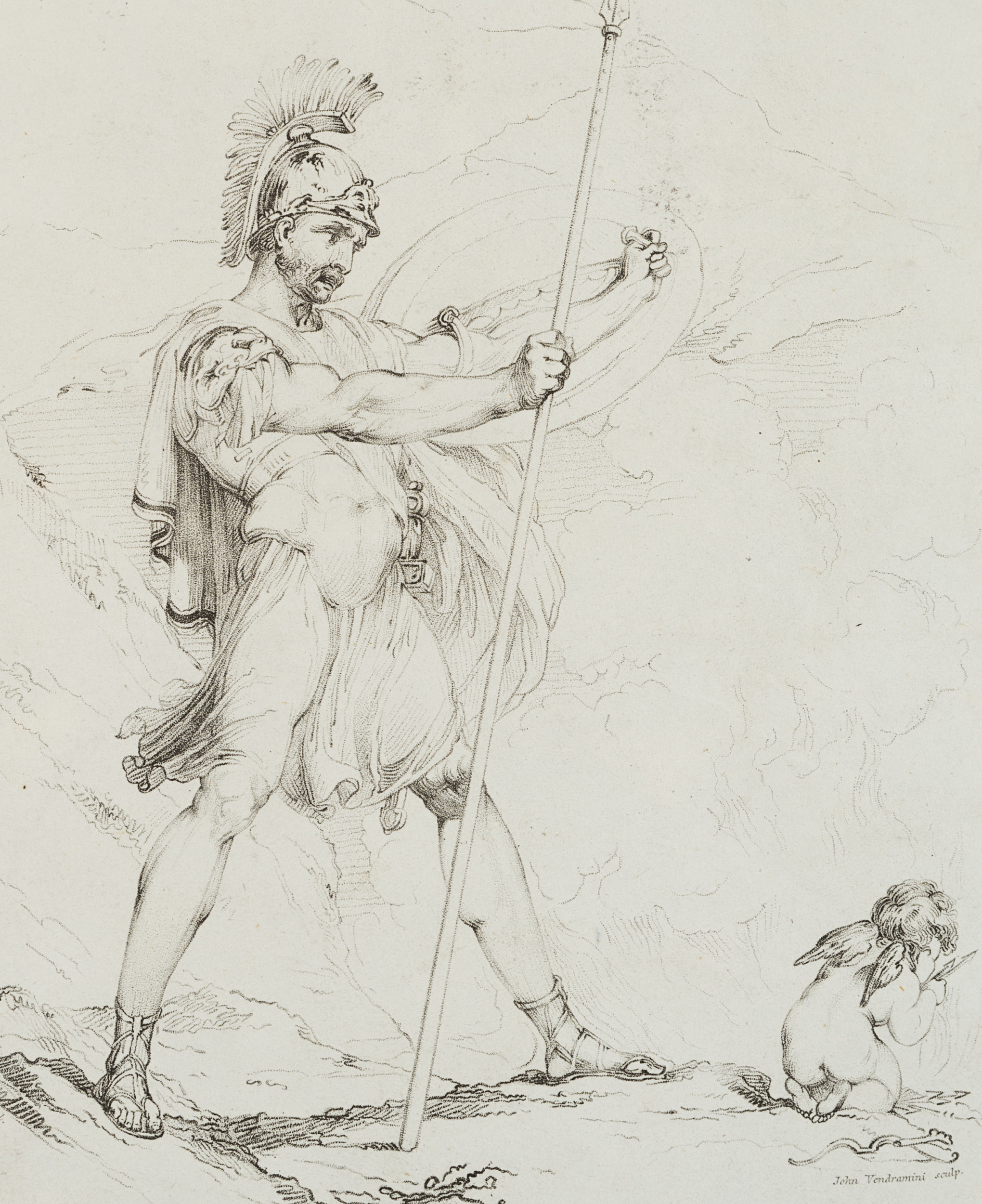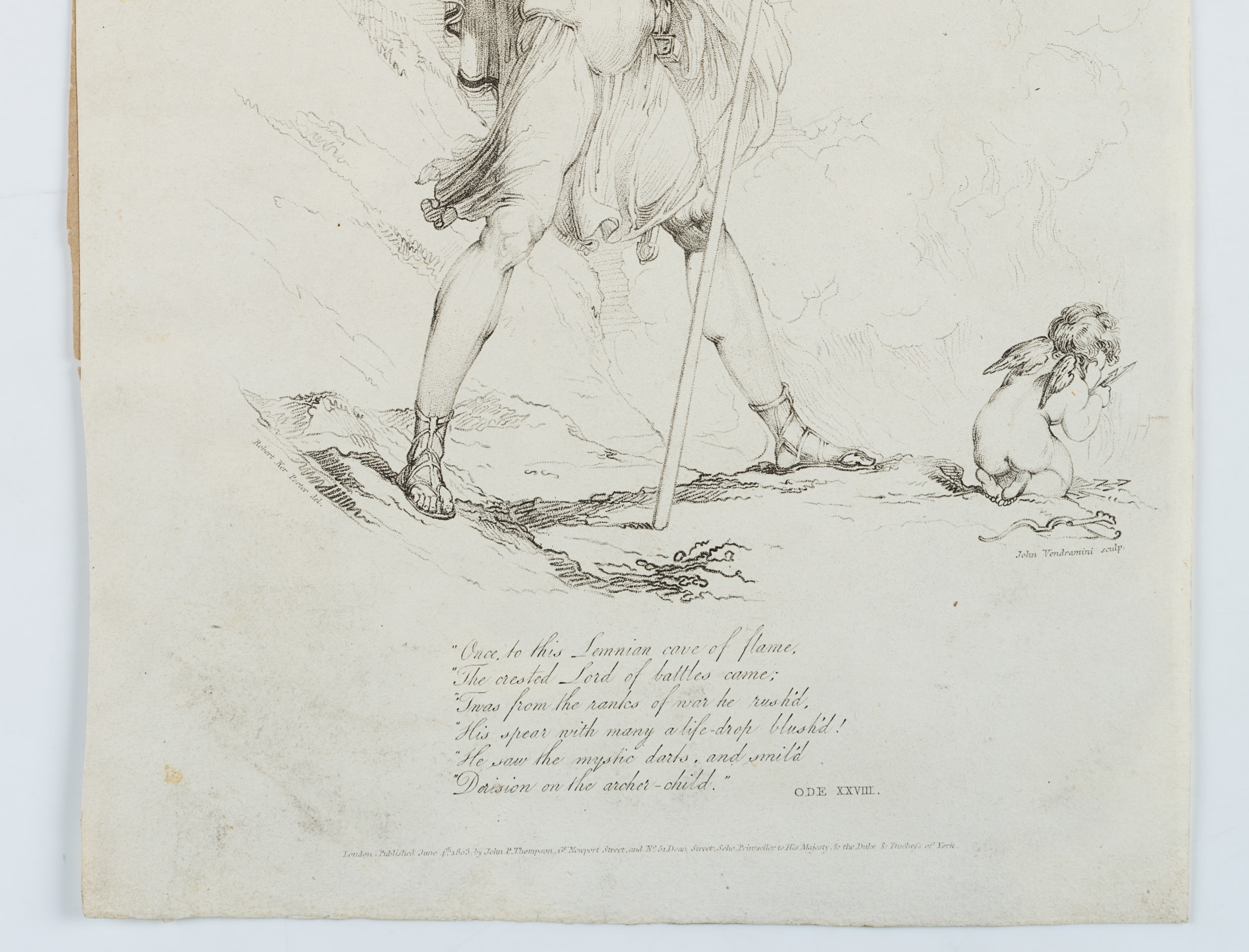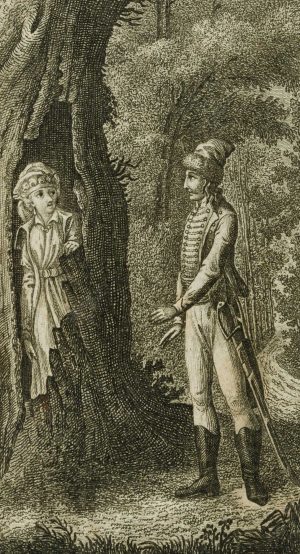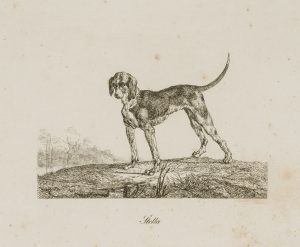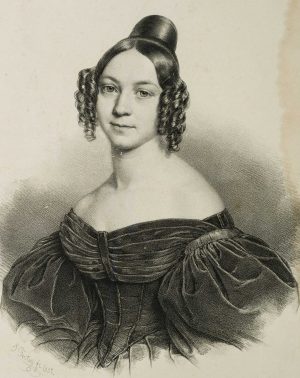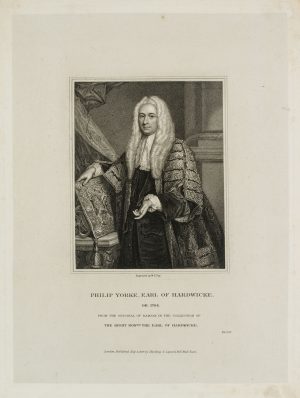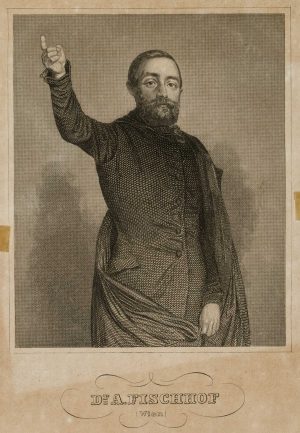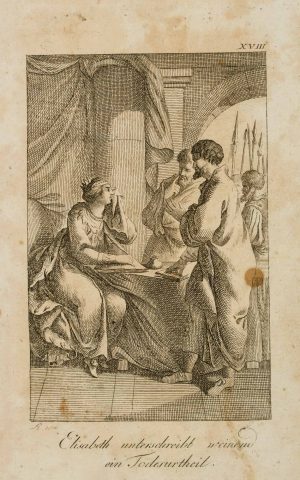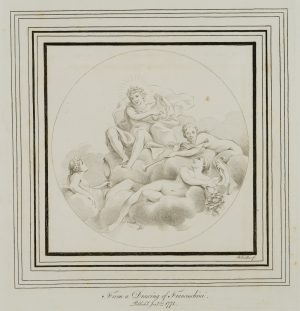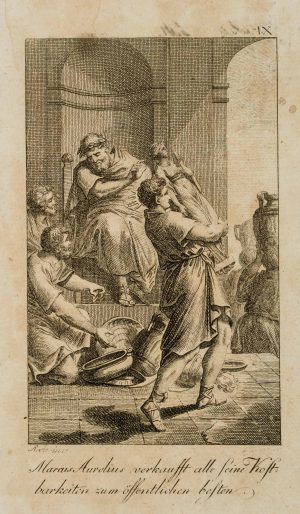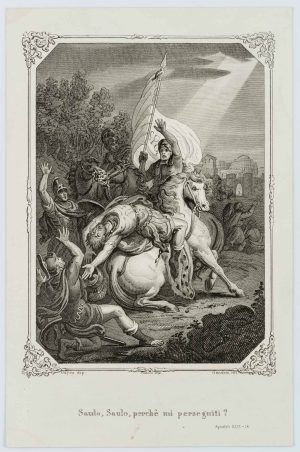Giovanni Vendramini (1769 Roncade – 1839 Bassano) nach Robert Ker Porter (1777 Durham – 1842 Petersburg), Die Lemnische Höhle aus Oden des Anakreon, um 1805, Crayonmanier
- Technik: Crayonmanier auf Papier
- Bezeichnung: Unten mittig im Druck signiert: “Robert Ker Porter del. / John Vendramini sculp.”. Unten mittig weitere Beschriftungen: “Once to this Lemnian cave of flame / The crested Lord of battles came / Twas from the ranks of war he rush’d / His spear with many a life-drop blush’d! / He saw the mystic darts, and smil’d / Derision on the archer-child / ODE XXVII”. Unten mittig zusätzliche Beschriftung: “London, Published June 4th 1803 by John P. Thompson, Gt. Newport Street and No. 51 Dean Street, Printseller to His Majesty, & the Duke and Duchess of York”.
- Datierung: um 1805
- Beschreibung: Illustration zu den “Oden des Anakreon”, übersetzt von Thomas Moore; ein Soldat steht mit dem Speer in der rechten und einem Schild in der linken Hand. Er blickt nach rechts. Dort kniet Amor, der seinen Bogen neben sich abgelegt hat und Pfeile in der Hand hält.
- Persönlichkeiten:
- Anakreon (um 575 v.Chr. Teos – 495 v.Chr. Athen)
Griechischer Dichter im Kanon der neun Lyriker
- Anakreon (um 575 v.Chr. Teos – 495 v.Chr. Athen)
- Quelle: Robert Ker Porter (1777 Durham-1842 Petersburg) A Series of Engravings, After Drawings by Robert Ker Porter from the Celebrated Odes af Anacreon, Translated by Thomas Moore, Esq., 1805 | Graphikfolge, Serie des Künstlers, Mythologie
- Schlagworte: Anakreon, Thomas Moore, Thomas Morus, Mythologie, Mythologie, Großbritannien, Romantik, 1800-1849
- Größe: 34,6 cm x 21,0 cm
- Zustand: Akzeptabler Zustand. Das Blatt weist Verschmutzungs- und Kratzspuren auf und ist stellenweise fleckig. Der Stich ist deutlich und klar abgebildet. Risse oder Fehlstellen liegen keine vor. Unten links mit leichtem Knick in der Ecke, der oberen Rand minimal knittrig. Das Blatt wurde auf ein braunes Papier aufgeklebt und von diesem wieder gelöst. Große Teile des Papiers haften der Blattrückseite noch an.
English Version:
Giovanni Vendramini (1769 – 1839 ) after Robert Ker Porter (1777 – 1842 ), The Lemnic Cave from Odes of Anacreon, c. 1805, Crayon manner
- Technique: Crayon manner on Paper
- Inscription: Lower middle signed in the printing plate: “Robert Ker Porter del. / John Vendramini sculp.”. Lower middle further inscription: “Once to this Lemnian cave of flame / The crested Lord of battles came / Twas from the ranks of war he rush’d / His spear with many a life-drop blush’d! / He saw the mystic darts, and smil’d / Derision on the archer-child / ODE XXVII”. Lower middle additional inscription: “London, Published June 4th 1803 by John P. Thompson, Gt. Newport Street and No. 51 Dean Street, Printseller to His Majesty, & the Duke and Duchess of York”.
- Date: c. 1805
- Description: Illustration to the “Odes of Anacreon”, translated by Thomas Moore; a soldier stands with a spear in his right hand and a shield in his left. He is looking to the right. There Amor kneels, who has laid down his bow beside him and holds arrows in his hand.
- Person:
- Anakreon (around 575 BC Work – 495 BC Athen)
Greek poet in the canon of the nine poets
- Anakreon (around 575 BC Work – 495 BC Athen)
- Source: Robert Ker Porter (1777 Durham-1842 St Petersburg) A Series of Engravings, After Drawings by Robert Ker Porter from the Celebrated Odes af Anacreon, Translated by Thomas Moore, Esq., 1805 | print suite, Series by the artist, Mythology
- Keywords: Anacreon, Thomas Moore, Thomas More, Mythology, 19th century, Romanticism, Mythology, United Kingdom,
- Size: 34,6 cm x 21,0 cm (13,6 x 8,3 in)
- Condition: Rather good condition. The sheet shows signs of soiling and scratching and is spotted in places. The engraving is clearly and distinctly illustrated. There are no tears or missing parts. Lower left corner with slight crease, the upper margin minimally creased. The sheet was glued onto and detached from a brown paper. Large parts of the paper still adhere to the back of the sheet.

